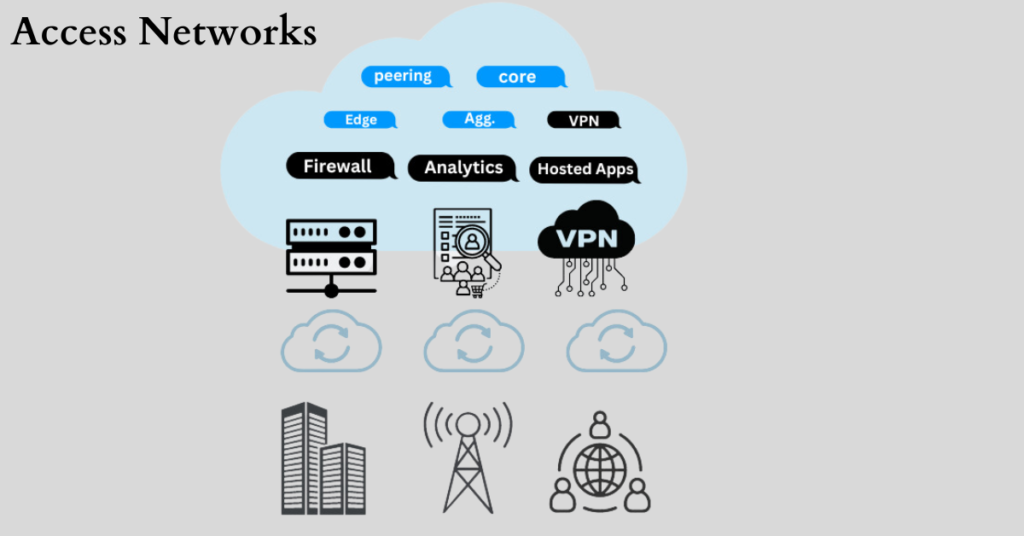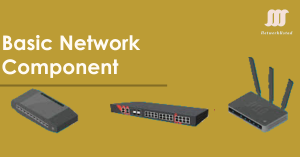Nowadays, access networks act as the backbone of digital communication. They grant effortless access for users to services and the Internet. The workings of access networks are vital for both businesses and private individuals. This extended article will then dive deeper into the significance, history, approach, types, and advancements in access network technology.
Importance of Access Networks
Facilitating Communication
The role of access networks in supporting and enhancing communication is priceless. Businesses use these networks for cloud-based storage, video conferencing, and popular software platforms. Data transfer over access channels will help smooth working, and collaboration to boost productivity will also be an advantage. In the same way, consumers need access to networks to attain internet access, VoIP, cable TV, and mobile connectivity, thus enriching their lives with lots of information and entertainment.
Reducing Costs and Increasing Efficiency
The access network is a crucial component in reducing the communication costs of businesses. The fibers have the advantage of providing high-speed data transfers and reliable voice and video conferencing applications that prevent long distances and costly infrastructure. This effectiveness in cost is also evident when expanding access networks around the globe, where business connectivity is made possible without geographical boundaries to help them tap into new market opportunities easily.
Empowering Innovation and Growth
Access networks accelerate innovation and development in several industries. Their reliable and top-level connection allows businesses to accept rising technologies and undergo digital transformation. To bring IoT (Internet of Things) to edge computing, access networks provide the building blocks for the next wave of innovation, which accelerates economic growth and social development.
Evolution of Access Networks

The development of access networks brings the trail of technological progress to aliens without rest. From small-scale gratifications in the 1990s to the advanced infrastructures of the present day, the access network has gone through significant transformations to satisfy the different demands of the users. The shift from dial-up connections to DSL, cable modems, and fiber optics is one example of an evolution in connectivity where high speed, increased reliability, and more possibilities become available.
Functionality of Access Networks
The functionality element of the access networks forms their core role, which allows smooth communication between the users and the service providers. Users connect to Internet Service Providers (ISPs) through modems, routers, and switches, which play the role of gateways, allowing for data transmission. As such, protocols, such as the Internet Protocol (IP), take care of the data flow within the network, ensuring proper routing and traffic prioritization based on importance. This capability is the cornerstone of modern communication structures, which enable business institutions and their clients to stay connected in our digital world daily.
Types of Access Networks

Wired Access Networks
For network analysis, wired access networks are based on physical cable infrastructures, including DSL, cable, fiber optics, and Ethernet. These networks guarantee reliability, safety, and high speed, making them great for residential and commercial use. In this line, DSL uses the existing copper phone lines to transmit information and is therefore capable of providing high-speed broadband internet service that is faster to download than dial-up connections. Local network operators use coaxial cables to relay high-speed, broadband internet access to residences. They are also connected to the provider through coaxial cables. Fiber-optic cables, becoming more widely adopted, can carry much more data and do it faster than conventional copper wires. These features make them an ideal choice for applications and services requiring a lot of data transferred over short distances. LANs (which are nowadays mostly built out of Ethernet) allow extremely fast transferring of data between computers on the same network, which not only increases connectivity but collaboration as well.
Wireless Access Networks
Wireless internet access networks are networks available without physical cables, providing flexibility and coverage even in diverse environments. The main types of wireless networks include Wi-Fi, cellular, and satellite networks. Wi-Fi networks are used everywhere, including at home offices and in public places, to connect devices to wireless access points that communicate via radio frequencies. Cellular networks, which can be deployed over a large area using towers, fulfill mobile communication needs in remote areas like onboard vehicles by providing voice calling, media streaming, and internet access. Despite being more expensive, satellite networks feature comparatively higher speeds and a wider coverage area, making them appropriate for deployments in remote and underserved areas. Wireless access networks make internet connections and other types of services possible, no matter where the user may be, and without physical constraints.
Hybrid Access Networks
A hybrid access network combines networks, e.g., fiber optics, Wi-Fi, or cellular, to create greater coverage and reliability. Combining the benefits of each technology type increases the coverage, availability, and scalability inherent in the system in case of failure. Thus, for example, a fiber cable network could be integrated with a Wi-Fi or cellular network to ensure the same user experience without service disruptions and to provide higher availability and performance. Hybrid access networks offer great advantages as regards areas with high user density and data-intensive applications, in which they can handle more traffic and provide better performance than single-technology networks. On the other hand, hybrid networks exist in markets, and many costs are saved by utilizing existing infrastructure and technologies to offer similar services to customers.
Advancements in Access Network Technology

Recent advancements in access network technology have revolutionized connectivity and communication, paving the way for a more interconnected world.
- Fiber to the Home (FTTH): Instead of copper cable, FTTH uses optical fiber cables installed directly into residences and buildings. This provides greater speed, reliability, and bandwidth than traditional internet connections. The growing number of FTTH deployments seen in recent times can be traced to the emergence of remote work, online education, increased demand for streaming media, and online gaming.
- 5G Cellular Technology: A major goal of 5G is to increase mobile device speed, providing more reliable connectivity and immersive experiences for global use. With the ability to transfer high amounts of data and cut latency compared with the technologies of previous generations, 5G networks make it possible to work with applications ranging from augmented reality to industrial automation, changing how we deal with technology.
- Software-Defined Networking (SDN): SDN (software-defined networking) is a network architecture that splits the control plane from the data plane to introduce more efficiency and flexibility in network control. Enter SDN enables network administrators to centrally manage and configure the network through software centrally centrally, leading to more automation, scalability, and agility. SDN transforms network management by decreasing operational complexity, decreasing costs, and providing more flexibility for innovation.
- Internet of Things (IoT): IoT is a networking phenomenon facilitated by the internal wiring of physical objects, vehicles, buildings, and other things with devices, software, and network connectivity. With IoT networks processing real-time data and getting efforts managed, business processes run more smoothly, and products become more appropriate and pleasant for users. IoT has changed nearly all industries, from smart homes to industrial automation. Work and humanization are nothing more than the effects of the IoT.
- Edge Computing: All processing is done at the network’s edge, which allows data to be generated and consumed from the data sources. Though edge computing eliminates sending data to a centralized data center, it creates low latency and becomes a fast solution for apps that need immediate reaction. Autonomous vehicles, augmented reality, etc., are enabled by edge computing for a new generation of apps and services with ultra-low latency, high-speed, and real-time responses.
Conclusion
Access networks and the whole digital transformation contribute to bridging the gap between individuals and enterprises on global markets while supporting creativity and inventions. In the wake of new technologies, connectivity networks will run the show, further stimulating the economy, encouraging societal progress, and leading people to the future.





